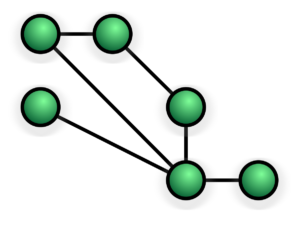 Cory Golob, KU1U, writes:
Cory Golob, KU1U, writes:Maine MESH Network Meeting, August 11, 2021
 Cory Golob, KU1U, writes:
Cory Golob, KU1U, writes:Serving ARRL members who reside in the New England sections
 Cory Golob, KU1U, writes:
Cory Golob, KU1U, writes: Cory Golob, KU1U, writes in the August 2021 issue of the Maine Telegraph Newsletter:
Cory Golob, KU1U, writes in the August 2021 issue of the Maine Telegraph Newsletter:
The first MESH Network Working Group meeting was held on Wednesday, July 28th. In attendance were Bill Richardson, NG1P; Brad Brown, Jr., KC1JMH; Cory Golob, KU1U; Fred Kemmerer, AB1OC; Leo Langelier, KH6JKQ; Phil Duggan, N1EP and Steve Jordan, KD1OM. We discussed a plan and vision to expand the MESH Network that NG1P started between Topsham and Brunswick on 5.8 GHz and how we can expand it in Maine and hopefully throughout New England.
We believe that getting back to our roots with RF linking is crucial as we have seen more dependence on internet linking over the past few years. This MESH Network has many possibilities including repeater linking, high speed data transfer and voice/video capabilities. The applications can be valuable for EMCOMM, Public Service Events and casual chatting.
This project will not be without any challenges as Maine has quite the topography, but we are excited to see how the adventure will unfold and benefit the hams in our state. With 5.8 GHz being threatened, it is more important now than ever that we show how well SHF can be utilized by amateur radio operators.
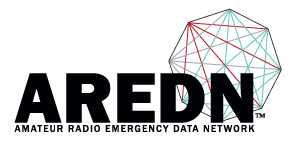 Steve Goldsmith, W1HS, writes on the Twin State Radio Club mailing list:
Steve Goldsmith, W1HS, writes on the Twin State Radio Club mailing list:
Good opportunity to learn about Mesh networking if anyone is interested.
—
Hello All,
Greater Manchester ARES invites other ARES groups to participate in mesh network training.
The first session is a zoom meeting on Wednesday, August 4th from 6:30 to 8:00pm. The second session is hands-on training in Goffstown on Sunday, August 15th, 9am to noon.
The Amateur Radio Emergency Data Network (AREDN – arednmesh.org) provides customized mesh software that can be flashed to commercial wifi routers, primarily in the 2.4GHz and 5GHz bands that are shared according to FCC Part 15 and Part 97 rules.
The AREDN software functions as a digital network with and without internet availability. Greater Manchester has had 5GHz nodes at Elliot Hospital and Catholic Medical Center operating continuously for 2 years. A node at the Manchester EOC was added recently. The Greater Manchester network supports email, chat, file transfer, and VOIP telephone services.
Training in August will focus on understanding how to access an AREDN network over dedicated wifi, exchanging email with Winlink Express over the network, and using the chat and simple file transfer capability built into the 5GHz routers.
Participants will use their own laptop computers with wifi capability, and with an installed browser and Winlink Express. The zoom meeting on August 4th will focus on introducing mesh networking, and configuring participant laptops for the hands-on exercise.
Those who plan to participate in the hands-on exercise should attend the zoom meting. Others interested in an introduction to AREDN mesh networks are also welcome to join the zoom meeting.
Please let me know who should be on a mailing list for additional information. I am sending this to a couple of email lists, so apologies in advance to those who receive multiple copies. Feel free to share with others. The more the merrier!
73,
Jay K1EHZ
k1ehz -at- arrl -dot- net
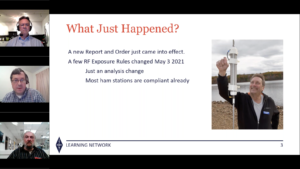 Many amateurs have requested a recording of the RF Exposure Rules presentation featuring Eastern MA Technical Coordinator Dan Brown, W1DAN on May 4, 2021. ARRL Laboratory Supervisor Ed Hare, W1RFI also participated in the call, fielding questions from the audience.
Many amateurs have requested a recording of the RF Exposure Rules presentation featuring Eastern MA Technical Coordinator Dan Brown, W1DAN on May 4, 2021. ARRL Laboratory Supervisor Ed Hare, W1RFI also participated in the call, fielding questions from the audience.
The presentation can be viewed at: <https://youtu.be/7dSieKF3rm0>.
[See also: Additional RF Exposure Rules Presentation, May 4, 2021]
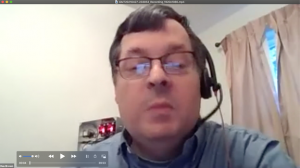 Eastern MA Technical Coordinator Dan Brown, W1DAN, will hold another presentation addressing the new FCC RF exposure rules on May 4 at 7:30 PM using the ARRL GoToWebinar platform.
Eastern MA Technical Coordinator Dan Brown, W1DAN, will hold another presentation addressing the new FCC RF exposure rules on May 4 at 7:30 PM using the ARRL GoToWebinar platform.
His April 27 talk was a hugely successful–a maximum number of 100 connections for the call was reached just as the discussion started. The GoToWebinar has a much higher limit and should accommodate all who are interested. ARRL Laboratory Manger Ed Hare, W1RFI, will serve as Technical Moderator on the call.
To sign up for the presentation, visit:
 From ema.arrl.org:
From ema.arrl.org:
The April 27, 2021 RF Exposure Rules Zoom Discussion by Eastern MA Technical Coordinator Dan Brown, W1DAN, has been posted to the Eastern MA ARRL website at: <https://drive.google.com/drive/folders/1_qIGZhHyMrha-axJt87Dcu0UZuJO0t8F>.
The discussion was a huge hit. The maximum number of 100 connections for the call was hit just as the discussion started; many late arrivals were disappointed to be turned away, but W1DAN plans to hold at least one additional online discussion before the May 3 deadline using a larger “Zoom room.”
Watch this space for details.
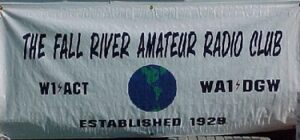 The Bristol County Repeater Association / Fall River ARC will conduct a tape measure antenna build party on May 1, 2021 from 1:00 to 4:00 PM at the South Swansea Baptist Church in Swansea, MA. The club asks for $20.00 to cover materials. They will supply the tape measures, 1/2″ PVC pipe and fittings, clamps, and a connection for your radio.
The Bristol County Repeater Association / Fall River ARC will conduct a tape measure antenna build party on May 1, 2021 from 1:00 to 4:00 PM at the South Swansea Baptist Church in Swansea, MA. The club asks for $20.00 to cover materials. They will supply the tape measures, 1/2″ PVC pipe and fittings, clamps, and a connection for your radio.
For more information visit the club web site at <https://bcra.club/bcrawprel/2021/04/06/fox-hunting-antenna-build/>.
via https://ema.arrl.org
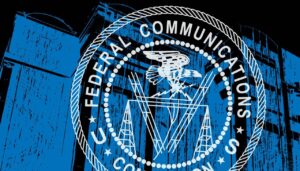 The FCC has announced that rule changes detailed in a lengthy 2019 Report and Order governing RF exposure standards go into effect on May 3, 2021. The new rules do not change existing RF exposure (RFE) limits but do require that stations in all services, including amateur radio, be evaluated against existing limits, unless they are exempted. For stations already in place, that evaluation must be completed by May 3, 2023. After May 3 of this year, any new station, or any existing station modified in a way that’s likely to change its RFE profile – such as different antenna or placement or greater power – will need to conduct an evaluation by the date of activation or change.
The FCC has announced that rule changes detailed in a lengthy 2019 Report and Order governing RF exposure standards go into effect on May 3, 2021. The new rules do not change existing RF exposure (RFE) limits but do require that stations in all services, including amateur radio, be evaluated against existing limits, unless they are exempted. For stations already in place, that evaluation must be completed by May 3, 2023. After May 3 of this year, any new station, or any existing station modified in a way that’s likely to change its RFE profile – such as different antenna or placement or greater power – will need to conduct an evaluation by the date of activation or change.
The Report and Order can be found online in PDF format at, <https://docs.fcc.gov/public/attachments/FCC-19-126A1.pdf>.
“In the RF Report and Order, the Commission anticipated that few parties would have to conduct reevaluations under the new rules and that such evaluations will be relatively straightforward,” the FCC said in an April 2 Public Notice. “It nevertheless adopted a 2-year period for parties to verify and ensure compliance under the new rules.”
The Amateur Service is no longer categorically excluded from certain aspects of the rules, as amended, and licensees can no longer avoid performing an exposure assessment simply because they are transmitting below a given power level.
“For most amateurs, the major difference is the removal of the categorical exclusion for amateur radio, which means that ham station owners must determine if they either qualify for an exemption or must perform a routine environmental evaluation,” said Greg Lapin, N9GL, chair of the ARRL RF Safety Committee and a member of the FCC Technological Advisory Council (TAC).
“Ham stations previously excluded from performing environmental evaluations will have until May 3, 2023, to perform these. After May 3, 2021, any new stations or those modified in a way that affects RF exposure must comply before being put into service,” Lapin said.
The December 2019 RF Report and Order changes the methods that many radio services use to determine and achieve compliance with FCC limits on human exposure to RF electromagnetic fields. The FCC also modified the process for determining whether a particular device or deployment is exempt from a more thorough analysis by replacing a service-specific list of transmitters, facilities, and operations for which evaluation is required with new streamlined formula-based criteria. The R&O also addressed how to perform evaluations where the exemption does not apply, and how to mitigate exposure.
Amateur radio licensees will have to determine whether any existing facilities previously excluded under the old rules now qualify for an exemption under the new rules. Most will, but some may not.
“For amateurs, the major difference is the removal of the categorical exclusion,” Lapin said, “which means that every ham will be required to perform some sort of calculation, either to determine if they qualify for an exemption or must perform a full-fledged exposure assessment. For hams who previously performed exposure assessments on their stations, there is nothing more to do.”
The ARRL Laboratory staff is available to help amateurs to make these determinations and, if needed, perform the necessary calculations to ensure their stations comply. ARRL Laboratory Manager Ed Hare, W1RFI, who helped prepare ARRL’s RF Exposure and You book, explained it this way. “The FCC did not change any of the underlying rules applicable to amateur station evaluations,” he said. “The sections of the book on how to perform routine station evaluations are still valid and usable, especially the many charts of common antennas at different heights.” Hare said ARRL Lab staff also would be available to help amateurs understand the rules and evaluate their stations.”
RF Exposure and You is available in PDF format for free download from ARRL at, <http://www.arrl.org/files/file/Technology/RFsafetyCommittee/28RFSafety.pdf>.
ARRL also has an RF Safety page on its website at,<http://www.arrl.org/rf-exposure>.
The ARRL RF Safety Committee is working with the FCC to update the FCC’s aids for following human exposure rules – OET Bulletin 65 and OET Bulletin 65 Supplement B for Radio Amateurs. In addition, ARRL is developing tools that all hams can use to perform exposure assessments.
 Hampden County Radio Association member Marcel Lapierre, AA1WH, of Chicoppe, MA has embarked on an ambitious High Altitude Balloon project. His balloon will be equipped with an APRS/WSPR tracking device, solar panels and antennas. He hopes that it will eventually cross the Atlantic.
Hampden County Radio Association member Marcel Lapierre, AA1WH, of Chicoppe, MA has embarked on an ambitious High Altitude Balloon project. His balloon will be equipped with an APRS/WSPR tracking device, solar panels and antennas. He hopes that it will eventually cross the Atlantic.
“In addition to 2-meter APRS and 20-meter WSPR transmitters, it carries full size dipole antennas of thin bronze wire (think guitar strings) and is capable of being heard in excess of 200 miles by APRS and 5000 miles on WSPR,” says Marcel. “All from just a few milliwatts of power and well under one ounce in weight.”
AA1WH is no stranger to WSPR and other digital modes. “My digital station is my old Yaesu FT 897D which is connected to an end-fed half wave 10- thru 40 meter multiband antenna set up in an inverted L. At maximum height, it is about 33 feet above ground level. With this modest station, I have worked the world on digital modes and tracked pico balloons more than 5000 miles away.”
Marcel intends to test his equipment thoroughly before launching it. “I have two 36-inch party balloons [to test with] … all I need to add is some hydrogen and we will be flying.”
Marcel intends to make his own solar panels for the larger thirteen foot balloon. “I just received 100 polycrystalline solar cells. These are .75 inches by 2 inches and less than 1/100 inch thick. They are made on extremely thin glass and are fragile.” Marcel admits that the project will challenge his soldering skills given his cataracts and arthritic hands. “This is where I hope to partner with the high school hams at Pathfinder Regional and get those young hands and eyes to assemble the transmitter.”
Marcel will conduct a shakedown run in the next few months before selecting a final launch date. “I’m looking [later in the spring] when days are getting longer so we get at least six hours of reports daily. Also, I will watch the weather here and over Europe and Africa and try to choose a launch window with a minimum chance of encountering bad weather,” he says.
AA1WH says that it’s not unheard of to achieve a circumnavigation with this setup “but chances are against it. “My goal is to get across the Atlantic and well into Europe or Africa. A bonus would be to make it all the way to Asia.”
Marcel can be contacted at aa1wh@arrl.net. –Courtesy, HCRA Zero Beat, February 2021
 Jon Turner, AC1EV, writes:
Jon Turner, AC1EV, writes:
An ARISS contact is scheduled for this Friday, February 5th with students from the Ottawa Carleton District in Ottawa, ON, Canada. The contact will be a multipoint telebridge contact. Fred Kemmerer, AB1OC, will serve as the relay amateur radio station. The astronaut is Mike Hopkins, amateur radio call sign KF5LJG.
The pre-contact program will begin around 12:20 pm local time and the ISS will come over the horizon at about 12:40 pm local time. You can listen to the downlink from the ISS on 145.800 MHz FM and you can watch the pre-contact program and the contact on the ARISS YouTube channel via the following link: https://www.youtube.com/channel/UCxm5Ca2y0HD_NxXlZWXv11A
[…] There are different frequencies for uplink and downlink so it is only possible for the public to monitor the downlink. The ISS will be overhead in our area for this contact, so it will be easy to hear.
One of the things I am doing now in ham radio is helping Fred Kemmerer, who is the President of the Nashua Area Radio Society, work with schools to make scheduled contacts with an astronaut on the International Space Station. Fred is a designated ARISS mentor for the US. ARISS is an organization that coordinates Amateur Radio activities on the International Space Station. I am currently assisting Fred behind the scenes with testing and setting up the ground infrastructure and internet connectivity needed to have students who are remote to their school have successful contacts with the ISS. We have a project underway with a school in Nashua for a contact in a few weeks.
This is a link to the recent contact from RSU#21 in Maine:
YouTube: https://www.youtube.com/watch?v=LN70OpJFMgs&feature=youtu.be
Here is a link to a report from a TV station about a contact from a few weeks ago with RSU#21:
https://www.youtube.com/watch?v=013JxlionCU
Here are other links on the contact you may find interesting:
https://www.wabi.tv/2021/01/22/maine-students-talk-with-astronaut-on-international-space-station/
I hope you find this interesting and are able to tune in to hear ham radio from space.
73 and stay safe (sane, too)
Jon Turner
AC1EV